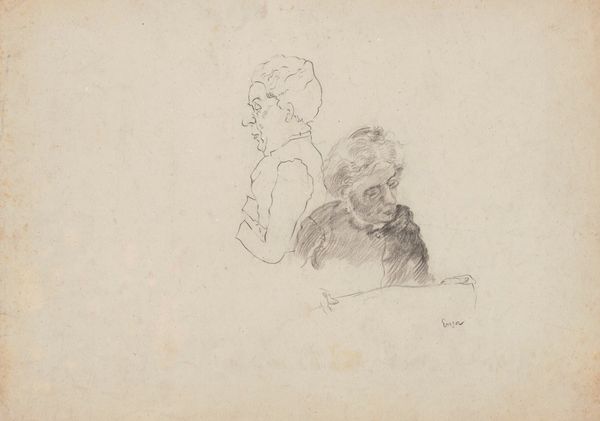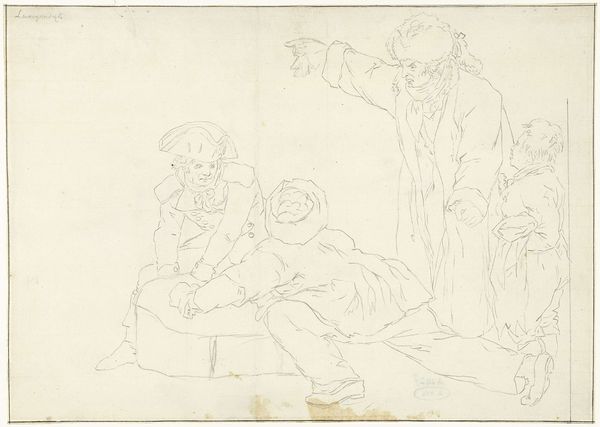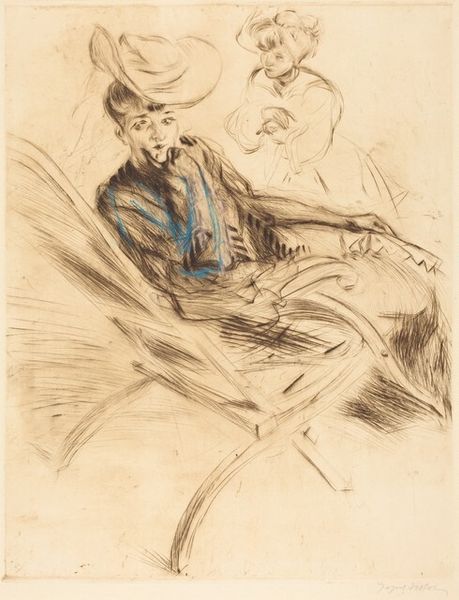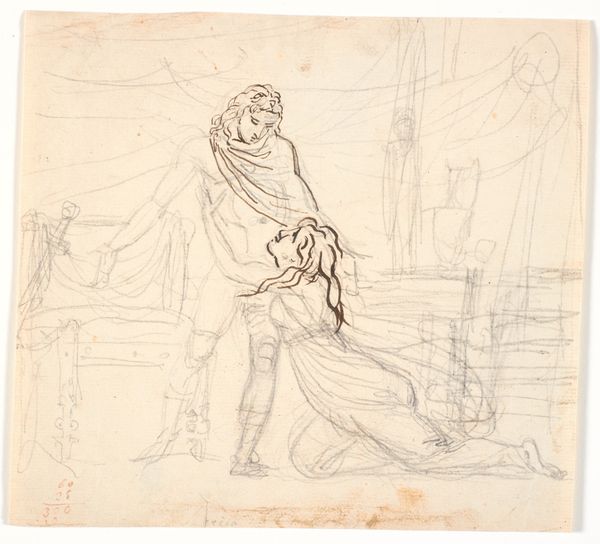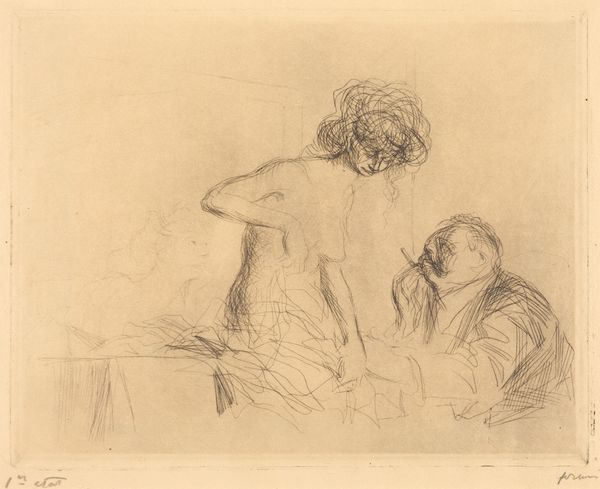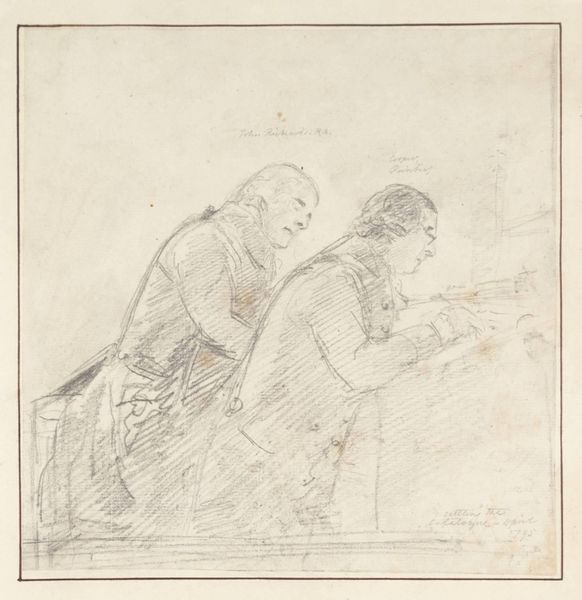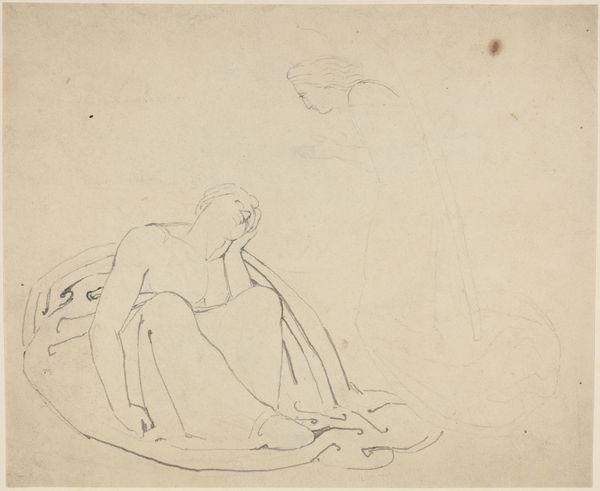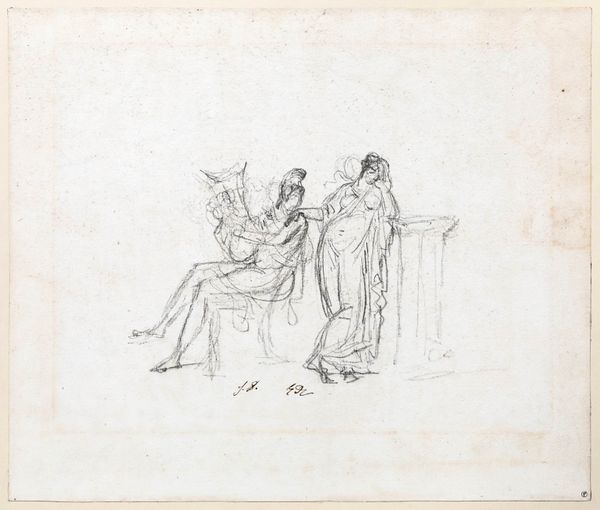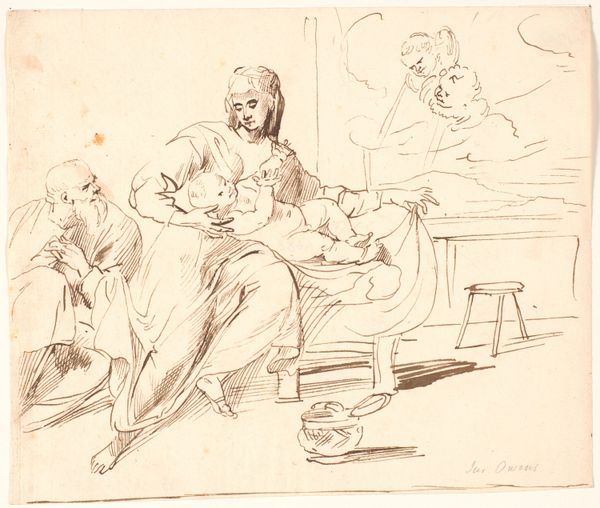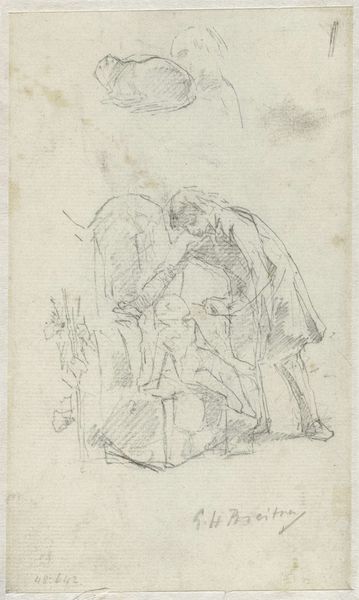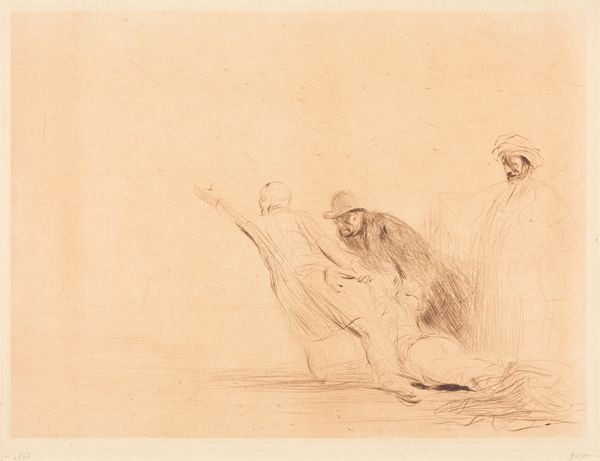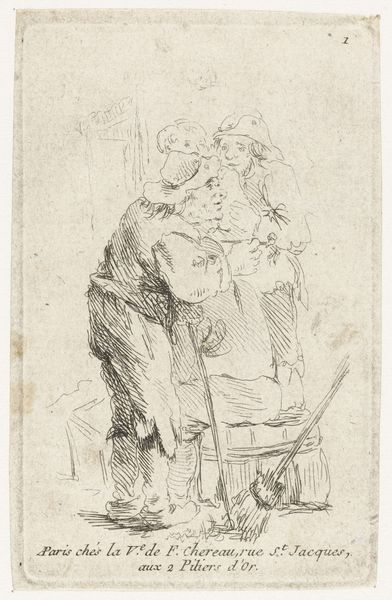
drawing, print, pencil
#
portrait
#
drawing
# print
#
pencil sketch
#
figuration
#
character sketch
#
pencil
#
portrait drawing
#
modernism
Copyright: National Gallery of Art: CC0 1.0
Curator: Segonzac's "Orchestra of Clowns," created in 1930, presents a striking tableau rendered with spare yet expressive pencil lines. Editor: My first impression is one of melancholy. Despite the clown figures, the drawing has a somber mood. It feels as if the joy has been drained, leaving behind mere outlines of what should be a lively scene. Curator: I agree that the delicate pencil strokes, while effective in delineating form, create an ethereal, almost spectral quality. Note how the artist captures light and shadow with such minimal mark-making. It speaks to a deep understanding of form and tone. Editor: Thinking of Segonzac's involvement in the artistic milieu of interwar Paris, one wonders if this seemingly lighthearted subject is also a reflection on the anxieties and uncertainties of the era. Clowns, often seen as symbols of joy, can just as easily represent disillusionment. Curator: Certainly, the sparseness of the composition forces us to focus on the raw quality of line, independent of narrative. It invites analysis through the purely visual, allowing an appreciation of line, form, and negative space in conversation with each other. The sketch provides only hints, requiring active interpretation from the viewer. Editor: The dedication inscribed in the lower right corner may provide an interesting direction, since Segonzac possibly created this sketch for someone close to him. This also leads to the question of how and when printed. The way it represents and gives visibility to figures like clowns could also be examined through broader histories of entertainment and representation. Curator: I hadn't considered the element of printmaking and reproducibility that is intrinsically bound with these type of works. A fine point indeed. Overall, Segonzac shows his artistry lies not just in representation, but in evocative understatement. Editor: Yes, there is a compelling duality at play. Lightness and weight, humor and sadness, representation, and critique blend within a deceptively simple sketch, allowing its audience to see far beyond the circus stage.
Comments
No comments
Be the first to comment and join the conversation on the ultimate creative platform.
